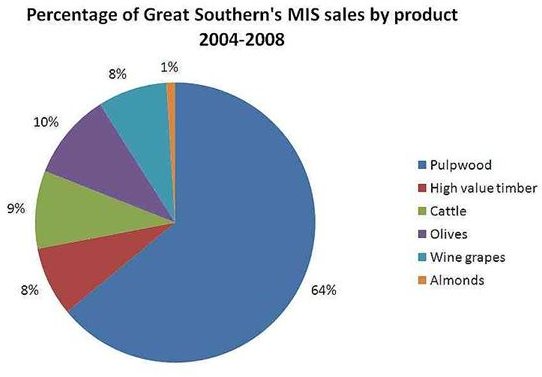Judgmental Techniques Used to Forecast Sales
Benchmarking Similar Businesses
A common judgmental method to forecast sales of new businesses with no historical data is considering the average sales volume of competing businesses of similar size selling similar products in similar locations.
The methodology is:
- Ascertain the net sales and square foot area of the business to benchmark.
- Divide the net sales volume by the square feet to get the square feet sales volume.
- Multiply the square feet sales volume with the square feet available in the start up business to get the estimated sales volume.
This method does not consider the established reputation and advertising strategies of the benchmarked business, and this raises scope for major distortions.
Image Credit: Wikimedia Commons/HamiltonStone
Population Estimate
Another common judgmental technique used to forecast sales of start-up businesses is through population analysis. The methodology follows:
- Estimate a radial distance within which area customers would patronize the shop.
- Estimate the number of households within the defined distance likely to require the products or service. Through various methods such as market surveys, data available with the Chamber of Commerce and trade journals, etc.
- Estimating the annual amount customers would spend on the product or service.
- Multiplying the per capital household expenditure on the product annually with the number of potential customers in the area.
- Dividing the resultant figures with the number of shops selling the same products or services in the determined area.
The distance factor remains guesswork, and usually market analyzers do several estimates of this nature by varying the distance. The major drawback of this model is that it does not consider the possibility of competitors already entrenched in the area.
To illustrate, a start up travel agency selling holiday packages might define its geographical area as a particular city. To forecast sales, the travel agency requires the number of people or households in the city most likely to go on holidays, and the average per capita expenditure on holidays. Information such as volume and turnover of other travel agents in the city, statistics of flight and train movements from the city, and market surveys help obtain these figures.
Assuming 1,000 families from the city went on holidays in the previous year out of a population of one million and the present population of the city is 1.1 million, an estimated 1,100 families would partake in holiday travel in the estimated year. Assuming the presence of eleven travel agents in the city, the sales forecast for the travel agency in question would be 1,100/11 = 110. Assuming a per capita spending of $1,000 per family, the forecasted annual sales forecast for the travel agency is 110 x 1,000 = $110,000.
Product Inventory
Forecasting sales through product inventory is another approach to forecasting sales without using historical data.
The process entails:
- Identification of the main products of the business.
- Determining product wise sales in the market by determining industry trends, intention surveys, market analysis, test marketing, and opinion of experts such as distributors and marketers.
- Identification of variables likely to influence future sales, and the extent of such impact. For instance, the extent of electronic commerce, telecommuting, and computer-based education initiatives drives up computer sales.
- Forecasting the sales of a particular product by dividing the industry sales figures with the number of businesses, and adding the potential for increased or decreased sales based on variables that impact future sales.
Trend Analysis

Yet another technique used to forecast sales is trend analysis by extrapolating historical sales data.
Short-term forecasts, for a few weeks or months entails a simple and direct comparison using the sales data for the similar period in the preceding years.
A more robust method is the cumulative percent analysis method. The methodology follows:
- From the sales data for the previous year, convert the weekly sales figures as a percentage of total annual sales for each week. For instance, if total annual sales turnover is $10,000, and sales in week one and week two were $100 and $50 respectively, the cumulative sales percentage would be 1 percent at the end of week one, and 1.5 percent at the end of week two.
- Divide the net sales in the current year with the cumulative percent of annual sales for the same number of weeks in the previous year. For instance if total sales for the first two weeks in the current year is $200, then based on the cumulative percent of the previous year, this $200 is assumed to be 1.5 percent of the total sales.
- Divide the resultant figure by the applied cumulative percent and multiply by 100 to get the annual sales forecast for the current year. So, $200 estimated as 1.5% of the annual sales and by using the formula to forecast annual sales, (200/1.5 x 100) shows the forecasted annual sales at $13,333.
Factors such as unusual weather, short-term labor issues, change in date of community events, and the like can, however, distort short term forecasts.
Image Credit: geograph.org.uk/BobEmbleton
Long Term Forecasting
Long term sales forecasting using historical data takes into account the impact of contextual factors that distort a simple correlation of historical data. Such factors include:
- Seasonal nature of the business
- Changes in economic and political environment
- Changes in competitors
- Change in trends and fashions
- Demographic changes
- Internal changes such as change in labor composition, organizational structure, etc.
Long term forecasting using trend analysis entails incorporation of various statistical techniques such as:
- Correlation analysis or using one set of data to forecast another set of data.
- Market factor indexation or using a formula incorporating factors predictive of sales volume to derive a market index figure.
- Regression analysis or identifying a statistical relationship between sales, the dependent variable in the analysis, and other independent variables.
- Exponential smoothening or reliance on current or recent trends to derive patterns from standardized historical data and reach a future projection.
All sales forecasting methods depend on guesswork, no model includes all variables that influence sales. Adoption of multiple forecasting methods and generating an optimistic and pessimistic valuation from all these methods helps add reliability to the forecast.
References
IEBM Encyclopedia of Marketing (1999). Sales Forecasting. International. Baker, Michael J. (ed). Thompson Business Press. Retrieved from : https://www.forecastingprinciples.com/paperpdf/Sales%20Forecasting%20from%20Encyclopedia.pdf
Encyclopedia of Business, 2nd ed. Sales Forecasting. Retrieved from https://www.referenceforbusiness.com/encyclopedia/Res-Sec/Sales-Forecasting.html
